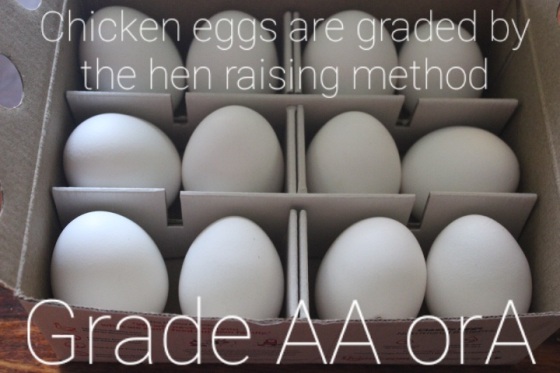The most widely consumed eggs are those of fowl, especially chickens - chickens and other egg-laying creatures are kept widely throughout the world and mass production of chicken eggs is a global industry.
Organic Eggs are laid by cage-free hens that are raised on certified organic feed and have access to the outdoor, hens' feed is grown without most synthetic pesticides, fungicides, herbicides or fertilizers, and 100% of the agricultural ingredients must be certified organic. Antibiotics and growth hormones are prohibited (although these will not be found in any shell eggs).
Free-range eggs are considered by some advocates to be an acceptable substitute to factory-farmed eggs, free-range laying hens are given outdoor access instead of being contained in crowded cages.
A 2011 research study carried out in North Carolina compared free-range and conventional caged eggs for fatty acids, cholesterol, vitamins A and E, finding higher fat content in free-range eggs, and no significant difference in cholesterol and vitamin levels - Vitamin D in eggs has been observed to increase up to 4 times in hens that have exposure to sunlight, compared to hens that are kept away from sunlight, another research suggests that grass fed hens can produce eggs that are rich in (n−3) fatty acids, without adverse oxidative effects.
The U.S. Department of Agriculture grades eggs by the interior quality of the egg and the appearance and condition of the egg shell. Eggs of any quality grade may differ in weight (size).
- U.S. Grade AA
- Eggs have whites that are thick and firm; have yolks that are high, round, and practically free from defects; and have clean, unbroken shells.
- Grade AA and Grade A eggs are best for frying and poaching, where appearance is important.
- U.S. Grade A
- Eggs have characteristics of Grade AA eggs except the whites are "reasonably" firm.
- This is the quality most often sold in stores.
- U.S. Grade B
- Eggs have whites that may be thinner and yolks that may be wider and flatter than eggs of higher grades. The shells must be unbroken, but may show slight stains.
- This quality is seldom found in retail stores because usually they are used to make liquid, frozen, and dried egg products, as well as other egg-containing products.
In Australia and the European Union, eggs are graded by the hen raising method, free range, battery caged, etc.
Chicken eggs are graded by size for the purpose of sales. Some maxi eggs may have double-yolks and some farms separate out double-yolk eggs for special sale.
Although eggshell color is a largely cosmetic issue, with no effect on egg quality or taste - in February 1976, the New Scientist magazine, in discussing issues of chicken egg color, stated "Housewives are particularly fussy about the colour of the eggs, preferring even to pay more for brown eggs although white eggs are just as good". As a result of these trends, brown eggs are usually more expensive to purchase in regions where white eggs are considered "normal", due to lower production. In France and the United Kingdom, it is very difficult to buy white eggs, with most supermarkets supplying only the more popular brown eggs. By direct contrast, in Egypt it is very hard to source brown eggs, as demand is almost entirely for white ones, with the country's largest supplier describing white eggs as "table eggs" and packaging brown eggs for export.




No comments:
Post a Comment